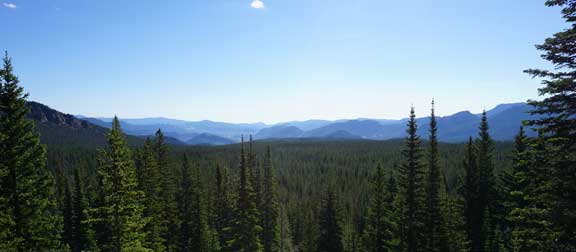This year, the National Park Service celebrates 100 years of encouraging adventure and preserving the great outdoors, making it the perfect time to get out and explore.
The untouched wonders, not to mention the clear skies and sunny days of summer, make a beautiful backdrop for the all-American family road trip. And while grand adventure awaits, so does the unexpected. Before you lace up your hiking boots and pack up the car, take some time to plan ahead.
Prepare for the Unexpected. As thrilling as it is to spot wildlife, the last thing you’d like to encounter after a long hike is a car that’s been ransacked or damaged by Mother Nature’s hungry creatures. Store food in a bear canister or sealed plastic bag and hang it in a tree rather than storing in your car. This makes the scent harder for animals to detect. For extra protection when leaving your vehicle, keep unattended cars shielded with tarps and bungee cords. At some national parks, vultures love to pick at the rubber around windshields, sunroofs and windshield wipers.
Check Vehicle Vitals. Ensure your vehicle is in tiptop shape. At the least, tires should have ample tread; tire pressure set at the correct level for your load; oil changed; and your spare tire inflated.
If taking to the road in an RV, routine maintenance is necessary to avoid mishaps. Conduct a walk-around, pre-departure check. Also, know its exact size so you can quickly determine where you’ll be able to park.
You may need to get familiar with “RV boondocking,” or camping off-grid, since many parks won’t have full-hookups. You’ll need to understand how your RV works when it isn’t connected then practice extreme water conservation and propane use.
Take this opportunity to review your auto insurance policy to make sure you’re protected in case of unexpected incidents or accidents. Some insurance companies, like Erie Insurance, even go beyond standard coverage to provide extra features covering things like windshields, wipers and airbags.
Look for a Sign. Obey all traffic signs. Most national park roads have a speed limit of 45 miles per hour or less. While this may seem slow, keep in mind this exists to protect you and surrounding wildlife. In addition to potential vehicle damage or possibly harming an unsuspecting victim, speeding can result in a federal ticket or even land you in federal court. Keep an eye out for falling rock or mudslide warning signs, too.
Steer Clear of Bad Weather. Each national park lists road closures due to weather, construction or damage to help you plan ahead and stay safe. And don’t think you’re out of the woods just because it’s summertime. There may not be snow and ice covering the roads, but there could be flooding or forest fires, among other hazards.
Stow a Survival Kit. Emergency items like a flashlight, first-aid kit, batteries, jumper cables, blankets, water and snacks are musts. Pack extra protection like sunscreen and portable chargers and keep a GPS device like a phone handy for added security.
Once your car is in prime condition and you’re prepared, pack your bags and buckle up. You’ll be able to explore the great outdoors worry-free and take in the bountiful sights our country and its national parks have to offer — from sea to shining sea.
~ Provided by StatePoint
Photo: Claire Hamilton

